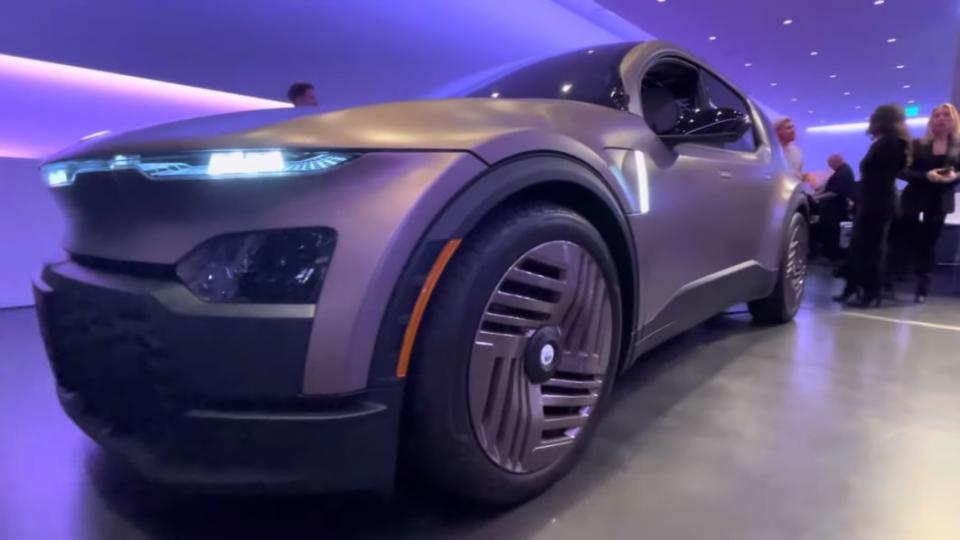Fisker Pear to get 'see-through' A-pillar and hopped-up Extreme trim

Fisker put a Pear on display at the L.A. Auto show in production spec. The latest display came with a few more updates on the urban EV planned to enter production at the end of next year at Foxconn's plant in Lordstown, Ohio. The first new bit is what's being called a "see-through A-pillar." The only car we've ever seen with an actual see-through A-pillar was the 2001 Volvo Safety Car Concept, the feature not making it to production on the C30 hatchback, regrettably. On the Pear, the see-through bit is performed by cameras projecting the view obscured by the A-pillars onto small screens located inside the cabin where the instrument panel meets the doors. These screens would also help explain Fisker's desire to sell the Pear with side-view cameras in the U.S., since the screens are already there. The displays weren't shown in the photos Fisker released in August, but they were in the auto show car.
The automaker again noted there will be two battery options, the smaller with an urban-centric estimated range of 180 miles, the larger Hyper Range pack aiming at an estimated 320 miles. The press release says the little crossover targets "a base 0-60 mph time of 6.3 seconds." We don't know if "base" in this case means the quickest time among the two trims, two drivetrains — RWD and AWD, and 20-inch wheels on all-season tires or 22-inch wheels on high-performance tires, or if it refers to the base model's smaller battery pack. Either way, seems there's a quicker option coming, Fisker mentioning a high-performance trim called the Pear Extreme.
We're treated to some tech specs on the Blade computer that's the brains of the Pear, but we're still waiting to find out what the promised processing and wireless data speeds will mean for the user experience. When introducing the Alaska pickup and the Pear to the audience, Henrik Fisker seems to have described the Blade as being two computers and called it "the latest, newest standard of the world."

 Yahoo Autos
Yahoo Autos 
